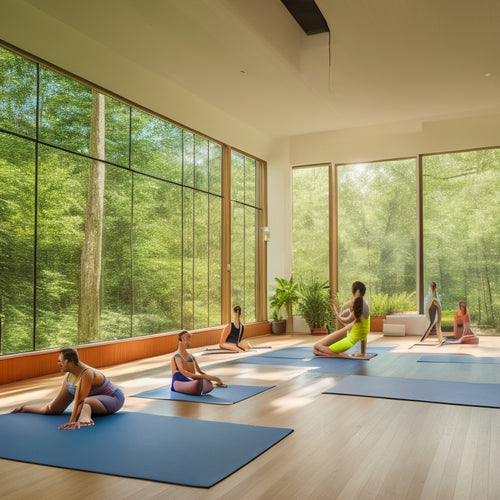
Competitive Dance: Athleticism Beyond Traditional Sports
Share
Competitive dance is a physically demanding activity that requires a unique blend of strength, agility, and endurance, rivalling traditional sports in its athleticism. Dancers undergo rigorous training and physical conditioning to develop choreographic skills, exhibiting exceptional strength, power, and flexibility. The physical demands of dance necessitate specialized care and maintenance routines, precision, and control. Misconceptions about dance as a sport have led to its marginalization, but it is essential to recognize its athletic merit. As we explore the intricacies of competitive dance, it becomes clear that this discipline is more than just aesthetics, with its athletes pushing their bodies to unprecedented limits.
Key Takeaways
• Competitive dance demands the same level of athleticism, discipline, and physical conditioning as traditional sports.
• Dancers require exceptional strength, power, and flexibility to execute intricate movements with precision and control.
• Rigorous training and physical conditioning are essential to build the endurance, agility, and strength needed for competitive dance.
• Misconceptions and stereotypes have diminished the legitimacy of dance as a sport, but promoting inclusivity can change perceptions.
• Specialized care and maintenance routines are crucial for dancers to prevent injuries and maintain peak physical condition.
The Athleticism of Dance
Competitive dance, often misunderstood as a purely artistic pursuit, requires a level of athleticism that rivals traditional sports, demanding physical strength, agility, and endurance from its practitioners.
This athletic prowess is evident in the rigorous training and physical conditioning that dancers undergo to develop their choreographic skills. Like traditional athletes, dancers must possess exceptional strength, power, and flexibility to execute intricate movements with precision and control.
The physical demands of dance are undeniable, with dancers requiring specialized care and maintenance routines to prevent injuries and optimize performance.
Overcoming Stigma and Misconceptions
Five decades of misconceptions and stereotypes have shrouded the athletic merit of dance, perpetuating a stigma that diminishes the legitimacy of dance as a sport. This outdated notion has led to dancers being marginalized and undervalued.
By challenging stereotypes and promoting inclusivity, we can break down these barriers and change perceptions. It is essential to recognize that dance requires the same level of athleticism, discipline, and physical conditioning as traditional sports.
The Physicality of Competitive Dance
Beyond the stigma and misconceptions that have long overshadowed the athletic merit of dance, lies a physically demanding activity that pushes dancers to their limits, requiring a unique blend of strength, agility, and endurance.
Competitive dance demands intense physical conditioning, with dancers engaging in rigorous strength training to build power, speed, and flexibility. Injury prevention is also an essential aspect, as dancers often face high-risk movements and repetitive strain. To mitigate this, dancers incorporate specialized exercises and stretches into their routines, focusing on core strength, flexibility, and balance.
Frequently Asked Questions
What Are the Benefits of Recognizing Dance as an Official Sport?
Recognizing dance as an official sport yields benefits such as increased exposure, attracting new participants and audience members, and improved perception, validating dancers' athleticism and dedication, ultimately fostering a more inclusive and diverse athletic community.
How Do Dance Teams Typically Fund Their Competitions and Activities?
"Dance teams often rely on fundraising strategies, such as bake sales, car washes, and benefit performances, as well as sponsorship options, including local business partnerships and grants, to fund their competitions and activities."
Are There College Scholarships Available for Competitive Dancers?
"Yes, many colleges offer dance talent-based scholarships, providing opportunities for competitive dancers to pursue higher education while continuing to develop their craft, with some institutions offering full-ride scholarships for exceptional dance talent."
Can Dancers Participate in Other Sports Alongside Competitive Dance?
As dancers navigate the intersection of art and athleticism, they can harmoniously balance competitive dance with other sports, leveraging flexibility training and cross-training benefits to enhance overall performance and resilience.
Are There Professional Leagues or Opportunities for Competitive Dancers?
Beyond traditional sports, professional opportunities exist for competitive dancers, including the Dance Union, which advocates for dancers' rights, and touring companies, offering performances and choreographic experiences that showcase athleticism and artistry.
Related Posts
-

Get Certified in Dance Makeup With Online Courses
You can gain a recognized certification in dance makeup through online courses, which demonstrate your expertise and ...
-

Exciting Lee Kiyoung Sticker: A Must-Have
Get ready to level up your self-expression game with Lee Kiyoung stickers! These customizable cuties offer unparallel...
-

Essential Spandex Shorts for Yoga and Pilates
Essential spandex shorts are vital for your yoga and Pilates practice. Look for moisture-wicking technology to keep y...


